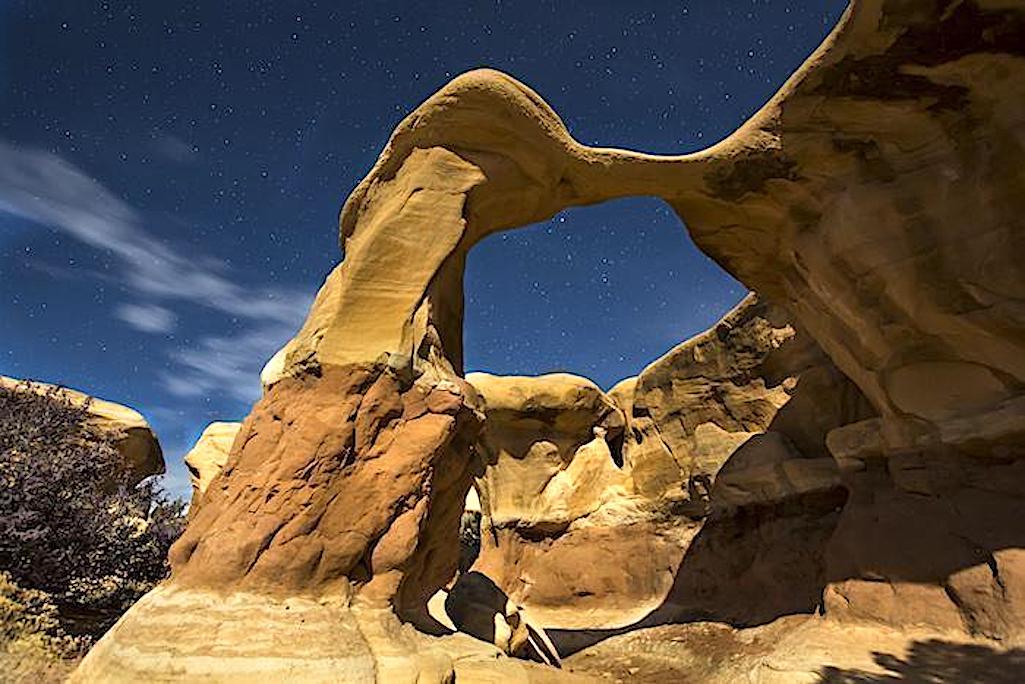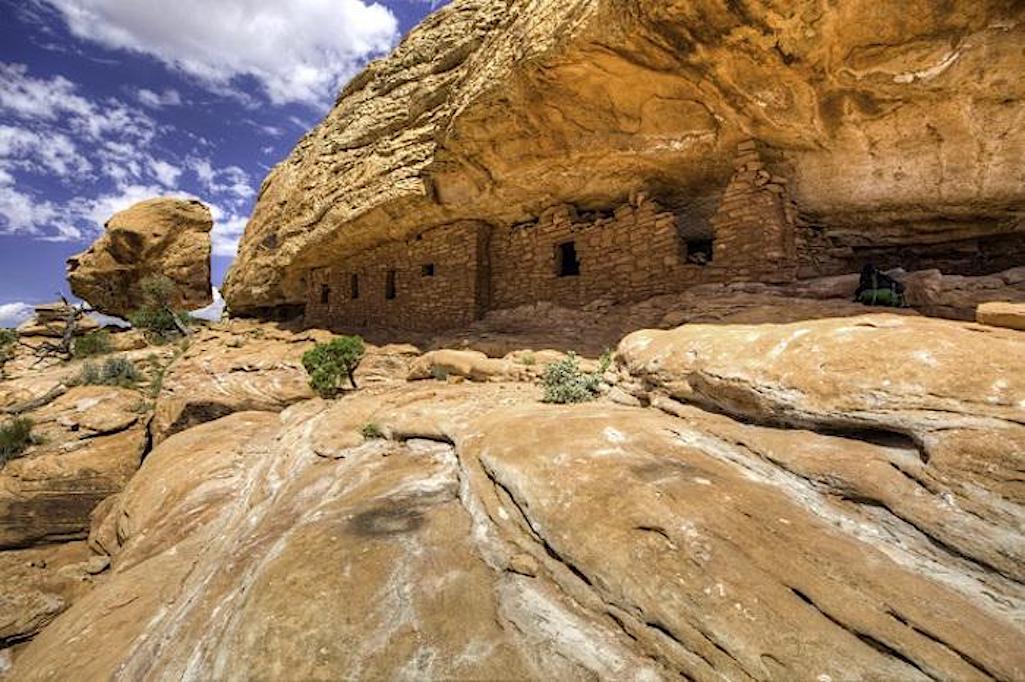
Utah's bid to block President Biden's move to restore the original boundaries of Bears Ears and Grand Staircase-Escalante national monuments could be intended for the Supreme Court.
Utah authorities appear to be hoping their lawsuit aimed at shrinking the size of Bears Ears and Grand Staircase-Escalante national monuments reaches the U.S. Supreme Court, where Chief Justice John Roberts a little more than a year ago expressed interest in exploring how big is too big when it comes to a monument established by a president under The Antiquities Act.
More than two dozen times in the 84-page filing submitted last week to the U.S. District Court in Utah the phrase "smallest area compatible" surfaced in Utah's argument that President Biden had "unlawfully" reversed the boundaries former President Trump had himself reversed over those set by Presidents Obama for Bears Ears and Clinton for Grand Staircase.
It was back in March 2021 when the Supreme Court declined to consider a case commercial fishermen brought over President Obama's designation of the 5,000-square-mile Northeast Canyons and Seamounts National Monument off the coast of Cape Cod. The fishermen had lost their bid before the U.S. District Court for the District of Columbia in 2019 to have the size of the monument altered, and appealed to the Supreme Court. While the high court declined to hear the appeal, Chief Justice Roberts seemed intrigued by the question of how big was too big for a presidentially-designated monument.
"No court of appeals has addressed the questions raised above about how to interpret The Antiquities Act’s 'smallest area compatible' requirement. The D. C. Circuit ... held that petitioners did not plead sufficient facts to assess their claim that the Monument swept beyond the 'smallest area compatible' with management of the ecosystem," Roberts noted in a brief statement. "To date, petitioners have not suggested what this critical statutory phrase means or what standard might guide our review of the President’s actions in this area."
The chief justice added that the high court might get another chance to rule on that question as there are "five other cases pending in federal courts concerning the boundaries of other national monuments."
At EarthJustice, a nonprofit legal firm that handles environmental issues, Heidi McIntosh, the organization's managing attorney for its Rocky Mountain Office, thinks Utah is hoping to get its case for the Supreme Court.
"I think that's where they're headed. That's what they said they're going to do," McIntosh said Friday.
However, she added, the arguments the state makes in its lawsuit have been "flatly rejected by the D.C. Circuit, even by the District of Utah, and in a previous challenge to the Grand Staircase, so the precedent is not on their side. I think that they're just perhaps thinking that the political shift in the court is going to maybe give them a lift."

How much land is needed to protect geologic oddities in the Grand Staircase?/BLM
Monumental Landscapes
Bears Ears and Grand Staircase-Escalante as originally designated spanned some 3.25 million acres breathtaking in expanse, visage, history, and culture in southern Utah. The undulating landscapes embrace high desert and forests, crooked geology, rugged chasms, and tabletop plateaus. Human history on the these landscapes ranges back thousands of years, and tribes today maintain their cultural ties to the lands.
After Clinton designated the Grand Staircase in 1996 -- a move so unpopular with Utah politicians that he did it from the South Rim of Grand Canyon National Park in Arizona -- paleontologists turned up amazing find after amazing find. Venture capitalists even opposed former Interior Secretary Ryan Zinke's suggestion that Trump shrink the two monuments.
Trump, in issuing his proclamation from the steps of Utah's Capitol in early December 2017, maintained that Clinton and Obama "severely abused the purpose, spirit, and intent of a century-old law known as the Antiquities Act."
"This law requires that only the smallest necessary area be set aside for special protection as national monuments. Unfortunately, previous administrations have ignored the standard and used the law to lock up hundreds of millions of acres of land and water under strict government control," he said at the time.
In making an argument for reversal of Biden's reversal of Trump's reversal, top Utah politicians renewed Trump's argument and claimed that Biden's move actually puts the lands at risk because federal land managers can't possibly protect them from visitors the "national monument" designations attract.
"These public lands and sacred sites are a stewardship that none of us take lightly. The archaeological, paleontological, religious, recreational, and geologic values need to be harmonized and protected. Rather than guarding those resources, President Biden’s unlawful designations place them all at greater risk. The vast size of the expanded Bears Ears and Grand Staircase-Escalante national monuments draws unmanageable visitation levels to these lands without providing any of the tools necessary to adequately conserve and protect these resources."
Among those signing onto that statement were Utah Gov. Spencer Cox, Lt. Governor Deidre Henderson, State Auditor John Dougall, Treasurer Marlo Oaks, and state Senate President J. Stuart Adams, House Speaker Brad Wilson, U.S. Sens. Mike Lee and Mitt Romney, and Congressmen Chris Stewart, John Curtis, Burgess Owens, and Blake Moore.
Conservation groups quickly pushed back against the state.
“For its 116-year existence, nearly every U.S. president has used The Antiquities Act to protect some of our nation’s most treasured and important landscapes and waters,” said Theresa Pierno, president and CEO for National Parks Conservation Association. “The Grand Canyon, Olympic, Acadia and dozens more of our national parks are protected today because of the existence of this law and the foresight of those who used it. This lawsuit is another blatant attempt to strip away protections for the lands this important conservation law safeguards. As we’ve said time and time again, an attack on one monument is an attack on all. We will continue to fight to ensure all national monuments are protected now and for the future.”
At WildEarth Guardians, Chris Krupp said, “[M]ost Utahns support the Bears Ears and Grand-Staircase-Escalante monument designations and want these places protected. This lawsuit is political theater, meant to appeal to the rabid minority that believes it’s their birthright to exploit the public lands we all hold in common.”
A Legal Tightrope
In Salt Lake City at the University of Utah, Brigham Daniels, a visiting professor from nearby Brigham Young University, said Utah faces a high hurdle in winning its case.
"The courts have basically allowed monuments to go forward, particularly if you have a really good record that identifies objects of importance, if you have enough objects that are sufficiently clustered as they are in Bears Ears," said Daniels, who focuses on environmental and property law. "But the question is, what are they going to do? Does the state actually intend to litigate this to the hilt and try to get to the Supreme Court? And if so, is the Supreme Court going to want to take up this case?
"I mean, if they want to look at The Antiquities Act," he continued, "is this the declaration that they want to go after, particularly given that the Biden administration and the Obama administration before have been so careful about laying out the justification carefully, with this kind of case in mind? I don't know. But I think that you are right to be focusing on if there is a play here and it's just not a political statement."

Bears Ears embraces a landscape with thousands of years of human history/BLM
Obama's proclamation for Bears Ears ran more than 4,000 words, and touched on the "objects of interest" the designation sought to protect. Among them were:
- The landscape is a milieu of the accessible and observable together with the inaccessible and hidden. The area's petroglyphs and pictographs capture the imagination with images dating back at least 5,000 years and spanning a range of styles and traditions. From life-size ghostlike figures that defy categorization, to the more literal depictions of bighorn sheep, birds, and lizards, these drawings enable us to feel the humanity of these ancient artists.
- Famed Navajo headman K'aayélii was born around 1800 near the twin Bears Ears buttes. His band used the area's remote canyons to elude capture by the U.S. Army and avoid the fate that befell many other Navajo bands: surrender, the Long Walk, and forced relocation to Bosque Redondo. Another renowned 19th century Navajo leader, "Hastiin Ch'ihaajin" Manuelito, was also born near the Bears Ears.
- The area's stunning geology, from sharp pinnacles to broad mesas, labyrinthine canyons to solitary hoodoos, and verdant hanging gardens to bare stone arches and natural bridges, provides vital insights to geologists.
- The paleontological resources in the Bears Ears area are among the richest and most significant in the United States, and protection of this area will provide important opportunities for further archaeological and paleontological study. Many sites, such as Arch Canyon, are teeming with fossils, and research conducted in the Bears Ears area is revealing new insights into the transition of vertebrate life from reptiles to mammals and from sea to land.
President Clinton likewise was extremely descriptive in explaining his decision to establish Grand Staircase.
- This high, rugged, and remote region, where bold plateaus and multihued cliffs run for distances that defy human perspective, was the last place in the continental United States to be mapped. Even today, this unspoiled natural area remains a frontier, a quality that greatly enhances the monument’s value for scientific study. The monument has a long and dignified human history: it is a place where one can see how nature shapes human endeavors in the American West, where distance and aridity have been pitted against our dreams and courage. The monument presents exemplary opportunities for geologists, paleontologists, archeologists, historians, and biologists.
- The monument holds many arches and natural bridges, including the 130-foot-high Escalante Natural Bridge, with a 100-foot span, and Grosvenor Arch, a rare ‘‘double arch.’’ The upper Escalante Canyons, in the northeastern reaches of the monument, are distinctive: in addition to several major arches and natural bridges, vivid geological features are laid bare in narrow, serpentine canyons, where erosion has exposed sandstone and shale deposits in shades of red, maroon, chocolate, tan, gray, and white. Such diverse objects make the monument outstanding for purposes of geologic study.
- Spanning five life zones from low-lying desert to coniferous forest, with scarce and scattered water sources, the monument is an outstanding biological resource. Remoteness, limited travel corridors and low visitation have all helped to preserve intact the monument’s important ecological values. The blending of warm and cold desert floras, along with the high number of endemic species, place this area in the heart of perhaps the richest floristic region in the Intermountain West.
Utah's legal exercise could all be for naught, for yet to be ruled upon, nearly five years after the fact, is whether Trump had the authority to tear down the monument boundaries set by Clinton and Obama. A few hours after Trump on December 4, 2017, issued his proclamation to chop 1 million acres from the Grand Staircase, a lawsuit was filed to prevent that from happening, and other groups filed a similar lawsuit over the president's move to reduce Bears Ears by 1.1 million acres.
McIntosh said Friday the lawsuit was still pending.
"That's a live legal issue," she said. "We don't think The Antiquities Act grants the authority to revoke national monuments."
Traveler footnote: The National Parks Traveler receives support for its coverage from both EarthJustice and National Parks Conservation Association.

 Support Essential Coverage of Essential Places
Support Essential Coverage of Essential Places



